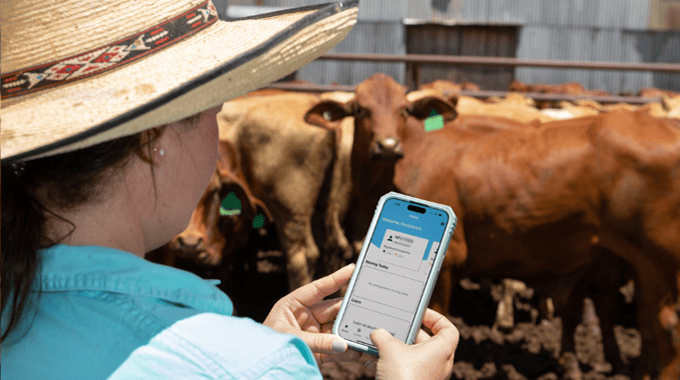
LAST week’s genetics column (click here to access) drew parallels between recruiting new employees and selecting replacement bulls.
That article prompted a question from UNE’s Dr Peter McGilchrist, who asked:
“Any chance you could pull together a list of websites or tools where people can compare ‘CVs’ which align with their breeding objectives within their breed of choice?”
It is a good question, and one that allows the recruitment analogy to be extended into the way breeders search and compare each sires’ CVs.
There are also some useful lessons, particularly for seedstock breeders who are seeking to advertise or attract attention to their offerings. For many seedstock breeders, reliance on catalogues posted to a mailing list is very similar to the approach taken by job seekers posting out résumés and seeking to register some response from potential employers.
Recruitment today rarely begins with a stack of résumés. Employers search through databases like Seek, LinkedIn or Beef Central’s popular Jobs Central platform, applying filters that reflect the role requirements.
They can specify qualifications, years of experience or skill sets – and within moments, a large applicant pool is reduced to a manageable shortlist.
Bull selection can follow the same path. Instead of leafing through hundreds of catalogue pages, breeders can access online BreedPlan databases maintained by their breed societies. These portals allow direct searches of bulls based on individual EBVs or on their ranking within selection indexes.
BreedPlan provides the industry with a consistent ‘CV format.’ Every EBV is expressed in the same way within a breed, allowing comparisons across animals in a catalogue or across years.
More importantly, the online search functions mean that breeders do not need to rely on whatever subset of data a vendor chooses to publish in a printed catalogue. They can search for bulls that meet the thresholds they consider important.
This process is the genetic equivalent of filtering résumés by specific technical skills or qualifications.
Avoiding single-trait selection
Just as recruitment managers rarely make a final decision on one attribute alone, bull buyers need to avoid the risk of single-trait selection.
This is where BreedObject software can be utilised. The functions provided through BreedObject are often overlooked; however, taking the step of viewing selected animals through indexes developed by BreedObject can form a solidly based final selection list centred on individual production requirements.
For producers unfamiliar with BreedObject, it is a software program that is used to develop the selection indexes that accompany BreedPlan EBVs. Through weighting EBVs according to their economic importance to different production systems, BreedObject produces an index that reflects the likely profitability of a sire for a given enterprise.
A self-replacing index will weight fertility and maternal traits more heavily, while a terminal index will prioritise growth and carcase merit. In practical terms, BreedObject performs the same role as the recruitment software that takes dozens of CV fields and produces an overall ranking of candidates for a job.
The strength of using indexes is that they ensure the bigger picture is not lost. A bull that looks appealing on one or two EBVs may in fact be unbalanced, dragging down fertility or carcase outcomes in ways that are not immediately obvious.
Indexes prevent hidden weaknesses
Indexes prevent those weaknesses from being hidden, because every EBV is included in the calculation and weighted by its real-world value to the enterprise. For breeders, this means that a shortlist created using indexes is much more likely to contain bulls that fit the defined breeding objectives, rather than bulls that happen to look impressive in one area but undermine progress elsewhere.
Internet Solutions search portal
Each breed society that has engaged with BreedPlan can provide access to the BreedPlan Internet Solutions search portal. The search functions allow users to apply thresholds to individual EBVs, search on selection index values, or combine both approaches.
Within seconds, the system produces a list of bulls that meet the nominated requirements. This functionality turns the recruitment analogy into something tangible. Just as no business manager reads every CV in detail, no breeder should need to manually scan every catalogue line by line.
The tools exist to filter, rank and select bulls against breeding objectives with efficiency and accuracy.
Preparation
The recruitment analogy also highlights the importance of preparation.
Employers only get good results from Seek or LinkedIn if they start with a clear job description. Similarly, breeders must be clear about their breeding objectives before opening the BreedPlan search page.
Without that clarity, the risk is that they will chase convenient traits, or be swayed by presentation, rather than choosing sires that genuinely add long-term value. The discipline of writing down what traits matter most in the herd, and how they align with market and management goals, is as essential in bull selection as it is in human resources.
Ultimately, the tools are in place for breeders to make bull selection a professional, structured process. BreedPlan provides the consistent CV across the industry, while BreedObject provides the ranking system that translates EBVs into meaningful comparisons for different enterprises.
Together they ensure that sire selection is not left to chance or first impressions. For breeders willing to take the same disciplined approach as employers do in recruitment, the reward is a herd that performs more predictably, more profitably, and more sustainably.

Alastair Rayner
Alastair Rayner is Principal of RaynerAg and an Extension & Engagement Consultant with the Agricultural Business Research Institute (ABRI). He has over 28 years’ experience advising beef producers and graziers across Australia. Alastair can be contacted here or through his website: www.raynerag.com.au
